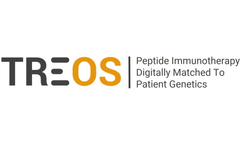Preclinical Data Articles & Analysis
8 articles found
For instance, CXCL10 has shown promise in preclinical models by enhancing T-cell infiltration into tumors. Additionally, chemokines play a role in vaccine development. ...
Enfortumab vedotin-ejfv (PADCEV®) is a first-in-class antibody-drug conjugate (ADC) that targets Nectin-4, a cell surface protein highly expressed in bladder cancer. Preclinical data suggest that the anticancer activity of Enfortumab Vedotin is attributed to its binding to cells expressing Nectin-4, followed by internalization and release of the anti-tumor ...
I did find a lot of data about the effect of drugs in clinical trials (e.g. the effect a drug has on humans), but surprisingly enough, not many of those drugs show up in the preclinical database (where I was hoping to find info on how cell cultures and animals react to the drug). ...
AFM13 is a first-in-class tetravalent, bispecific NK cell engager that binds to CD30 on tumor cells and CD16A on NK cells. By engaging CD16-positive NK cells, AFM13 leads to NK cell-mediated killing of tumor cells.1 Pembrolizumab (Keytruda®) is approved in patients with R/R classical Hodgkin lymphoma as monotherapy. AFM13 showed single agent clinical activity with solid safety profile in a ...
Mir Hashim, SCO of Rani, says the microinjector technology has been assessed in multiple preclinical studies, with canines and pigs, and three endoscopic studies in the small intestine between the duodenum and ileum. Repeat safety studies also have been conducted for daily delivery up to seven days, with no evidence of tissue damage. In its preclinical program, ...
“Overall, with the downstream physiological activation shown, these data have compelling implications for the development of highly immunogenic, T cell-focused global vaccines against various pathogens and diseases. We look forward to leveraging our proprietary data science and therapeutic platform to continue investigating this ...
Even so, the standard paradigm for preclinical ADME data translation includes: (1) testing a compound in preclinical subjects and collect outputs, (2) building 1- or 2-compartment model of compound PK, or use physiologically-based pharmacokinetic models (PBPK), (3) fitting model parameters to the compound PK data, (4) scaling ...
Experience: Find your carrots Biologists in a global pharmaceuticals company were capturing and managing preclinical in vivo data with ad-hoc and Excel-based approaches. They were comfortable with this approach, but this made this critical data hard to find, hard to understand and hard to reuse by the modellers who wanted to introduce better ...








